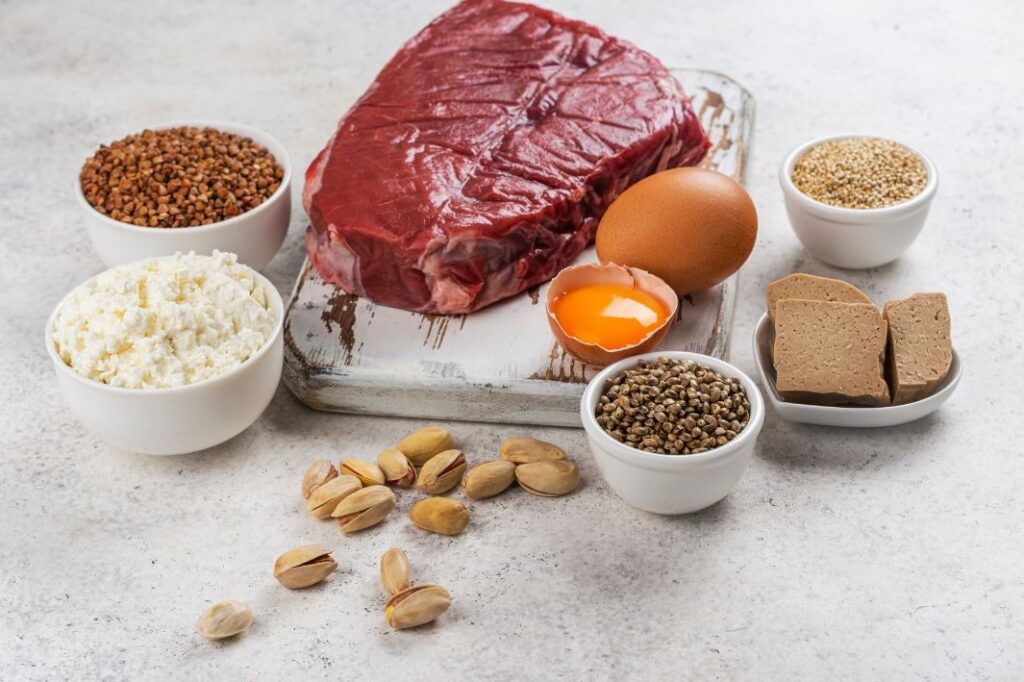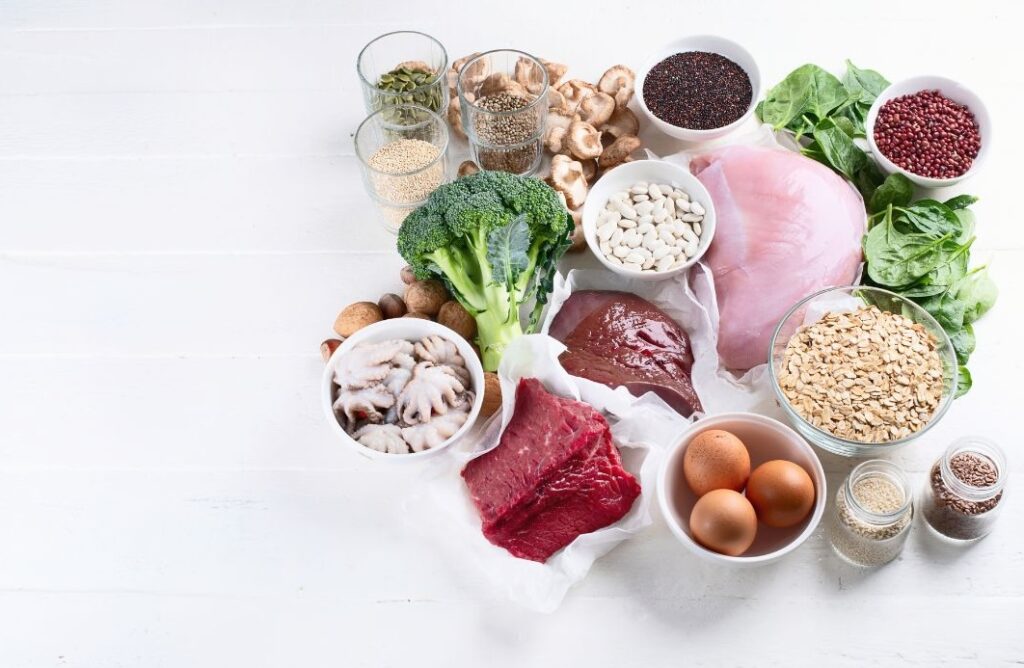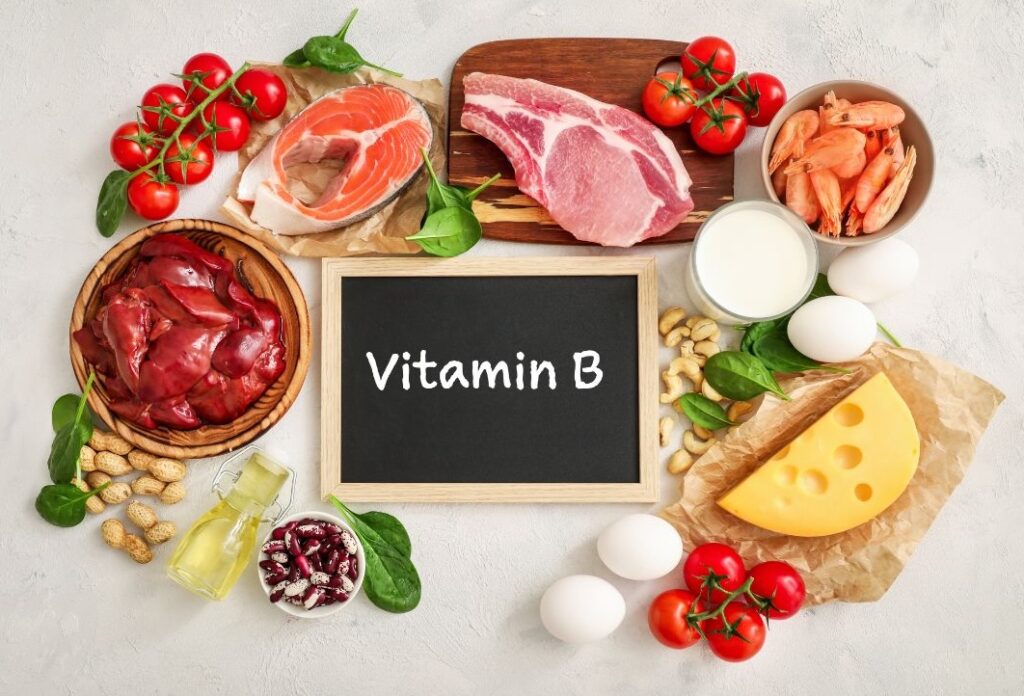Understanding the nutrition needs of elderly individuals is crucial for improving their health and well-being.
As we age, our bodies require a balance of nutrients to maintain functionality, yet many seniors face challenges in meeting their nutritional needs for the elderly.
Key nutrients often fall short in their diets, affecting everything from muscle strength to bone health.
Recognising and addressing these nutritional gaps can significantly improve the quality of life for elderly loved ones, ensuring they receive the essential vitamins and minerals needed for a vibrant, healthier life.
This article aims to guide carers, family members, and support workers on how to enrich the diets of elderly individuals with vital nutrients.
Nutrients the Elderly Need
As we look into nutrition for elderly individuals, it’s important to highlight several key nutrients that play important roles in their health and daily functioning.
Protein

This is essential for maintaining eating a balanced diet preserving muscle mass and strength, crucial for maintaining mobility and preventing sarcopenia.
Elderly individuals can benefit from incorporating protein-rich foods like lean meats, fish, beans, and dairy products into their diets.
To aid in muscle repair and growth, consider adding protein to every meal and snack, such as adding cottage cheese to fruit or beans to salads.
Calcium
This is vital for bone health, reducing the risk of osteoporosis and fractures. Sources like milk, yoghurt, cheese, and fortified plant milk can help meet the daily nutritional requirements of calcium for an elderly person.
Encouraging the consumption of these foods, along with small amounts of leafy greens, can ensure adequate calcium intake.
Iron

Iron helps to prevent anaemia, a common but often overlooked issue in the elderly, affecting energy and cognitive function.
A diet rich in iron from sources like lean meats, spinach, and fortified cereals, combined with vitamin C-rich foods such as citrus fruits, can enhance iron absorption and combat anaemia effectively.
It’s important to be aware of iron absorption inhibitors like excessive tea or coffee and high-calcium foods when consumed alongside iron-rich meals.
For those with dietary restrictions, creating appealing, iron-enriched meals is vital.
Options like smoothies with spinach and strawberries stews with lean meats, and fortified oatmeal can ensure adequate iron intake.
Incorporating these strategies helps maintain the health and vitality of elderly individuals, emphasising the balanced nutrition necessary for preventing anaemia and promoting overall well-being.
Vitamin D
To take care of both bone and immune health; Vitamin D plays a major role.
With limited sun exposure, elderly individuals might need to rely on fortified foods and supplements.
Regular checks and appropriate supplementation are advisable to maintain healthy levels.
B vitamins

The B vitamins, particularly B12, B6, and folic acid, play pivotal roles in energy metabolism and cognitive health in the elderly.
Ageing can diminish the body’s ability to absorb these nutrients efficiently, making fortified foods and dietary supplements vital for maintaining adequate levels.
B12 is especially important, as its absorption is known to decrease significantly with age, highlighting the need for targeted nutritional strategies to support overall well-being in senior populations.
Folic Acid
Folic acid is important for maintaining cardiovascular health and producing red blood cells, which is particularly important for preventing anaemia in the elderly.
This is found in leafy greens, legumes, and fortified grains, folic acid supports vital bodily functions.
For elderly individuals, who may have specific medical conditions affecting nutrient absorption, supplementation can be vital.
Carers should ensure diets are rich in folic acid or consider supplements under medical advice to manage the increased risk of heart-related issues and maintain overall health.
Vitamin A
Vitamin A is essential for preserving vision, boosting immune function, and maintaining skin health in elderly populations.
Maintaining Vitamin A levels as the body ages helps support eye health and reduces infection risk.
Rich dietary sources include colourful fruits and vegetables like carrots, sweet potatoes, and leafy greens.
However, older adults often face challenges in consuming sufficient amounts due to dietary restrictions or decreased appetite.
Carers should focus on incorporating these Vitamin A-rich foods into daily meals, ensuring seniors receive the nutrients necessary to sustain their health and vitality.
What to Put on an Elderly Person’s Plate
Creating a balanced meal plan for elderly individuals plays a huge part in general health and well-being.
A well-rounded plate should include a variety of nutrient-rich foods to meet their dietary needs.
Start with lean proteins to support muscle health, add whole grains for fibre, and include plenty of fruits and vegetables for vitamins and minerals.
Dairy or fortified plant-based alternatives can provide necessary calcium and vitamin D.
For those with dietary restrictions or preferences, consider alternative protein sources like tofu and legumes, and calcium-rich vegetables like kale and broccoli.
Portion control should be focussed on smaller, nutrient-dense meals that can prevent overeating and support better digestion.
Encourage the inclusion of healthy fats from sources like avocados and nuts for additional energy and brain health.
Hydration is also key, so make sure water, herbal teas, and other low-sugar drinks are available.
Elderly Meal Serving Size
Appropriate portion sizes are needed for elderly individuals, taking into account their reduced energy needs but making sure that they receive the nutrients required for health.
Smaller, more frequent meals can aid in managing metabolism changes and varying appetites.
Plates should be visually appealing, with a focus on high-nutrient foods in manageable portions.
To adjust serving sizes, consider the individual’s activity level, health status, and specific nutritional needs.
For example, a physically active senior may require larger portions of protein and whole grains, while those with a sedentary lifestyle might benefit from smaller servings to maintain weight.
Incorporating a variety of colours and textures can also make meals more attractive and encourage eating, even for those with diminished appetites.
For seniors facing challenges with large meals, consider serving five to six smaller meals or snacks throughout the day.
This can include a mix of finger foods, smoothies, and nutrient-dense soups, which are not only easy to consume but also provide hydration.
Making sure elderly individuals receive the nutrients they need is a cornerstone of maintaining their health and vitality.
By focusing on balanced meals and appropriate portion sizes, carers and family members can significantly impact their loved one’s well-being.
For more guidance, please feel free to contact us for understanding of our live-in care packages, particularly for support for those with nutritional and overall health needs needing to be catered for.

